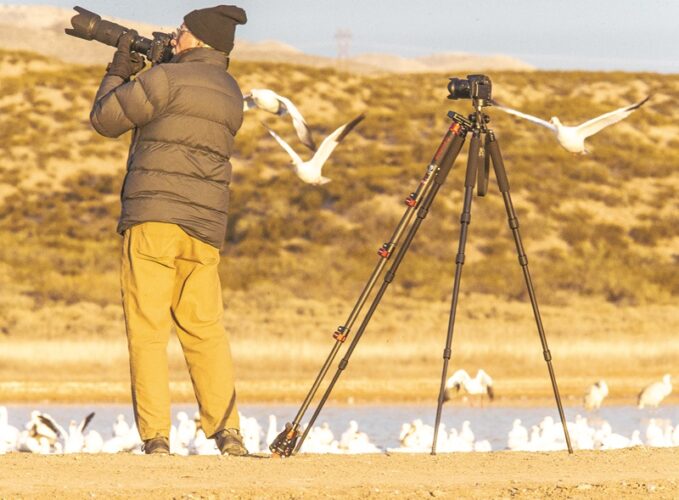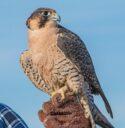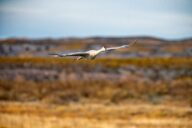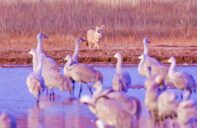
The early morning sun’s light starts a bevy of activity at the Apache del Bosque.
Russell Huffman | El Defensor Chieftain
Bracing against the bitter cold, hundreds of photographers and Sandhill crane enthusiasts lined the banks of lakes to catch a glimpse of the birds during the Festival of the Cranes at the Bosque del Apache.
A Socorro school bus filled with a “Morning with the Cranes” class pulls up just as the night sky begins to give away to sunrise. Saturday morning’s students are silhouetted against a purple and gold sky as they make their way toward the best viewing spots.
The cranes are still hidden in the dark, but the water is alive with their sounds, and with each croak (think small frog) and unison call between mating pairs, instructors Paul Tebbel and Keanna Leonard explain what’s going on.

Sunrise and sundown provide numerous opportunities for photographers to capture images.
It’s a magical time for Tebbel, who would live in New Mexico, except his wife lives in northern California and has no plans on moving.
“The Bosque del Apache is the best place in this country to watch cranes, and I am a crane watcher. I research cranes. I love to watch cranes. I love to teach workshops about cranes because the people I meet are really cool. How many places can you go and watch a bird that size just float in right over the top of you? It’s just magic. And I love New Mexico,” Tebbel said.
As the day creeps toward dawn, there’s a jittery excitement among the photographers who are set for the “fly-out,” hoping to perfectly frame the cranes during takeoff and flight. There are whispers about proper settings and frantic digging into pockets to reassure themselves they have their memory cards.
At the nearby visitor’s center, Canon has set up a booth and is lending out its latest line of lenses in the hopes of new customers. One couple is politely asked to hold down the level of their conversation as they discuss the potential purchase of a 600mm lens, and one of them sleeping on the living room couch for an extended period.
Ten minutes later and a quick review of some of the lens-captured images is all it takes to restore marital bliss, and a firm “no” has become a maybe.
Meanwhile, Tebbel and Leonard’s 10 students (classes are limited to give the best instruction) are stowing away facts like Sandhills cranes can live 40 or more years and that breeding pairs stay together.
“It’s just magnificent to see all the different things they do. They dance year-round,” Tebbel said.
Behind him, the water is filled with cranes, ducks and other waterfowl about to take flight.
Tebbel reported the numbers of birds are down this year, which can be attributed to the milder weather conditions, and a good number of the birds are still between Albuquerque and Socorro.
Tebbel and Leonard also taught another class of students in the festival’s Private Lives of Sandhill Cranes, which allowed as many as 25 students to learn about recognizing juveniles and subspecies, distinguishing between dancing and aggression in their interactive mini-workshop at the New Mexico Tech Macey Center.
- Alamo Girls Basketball Reserve 12-1-22



































